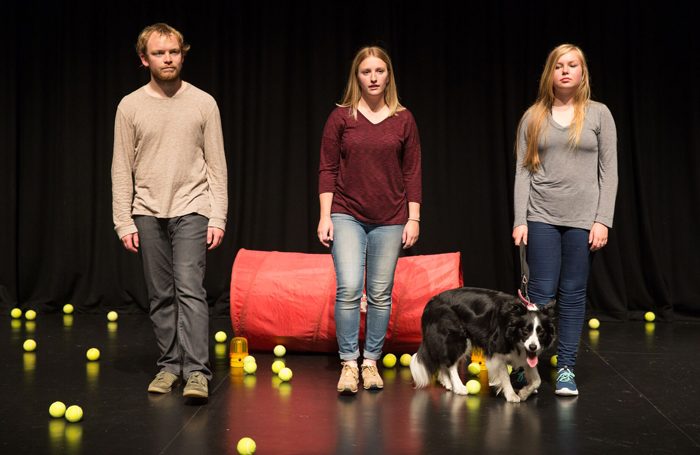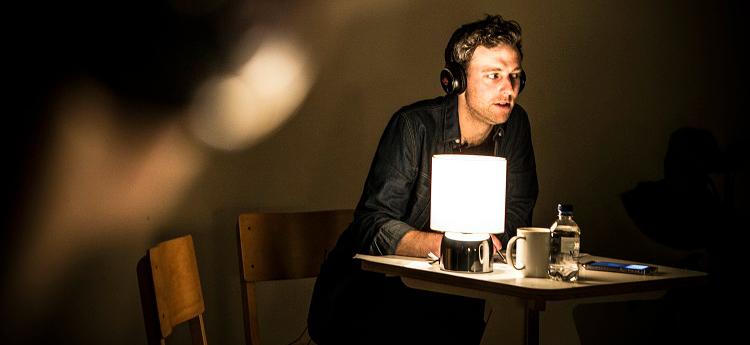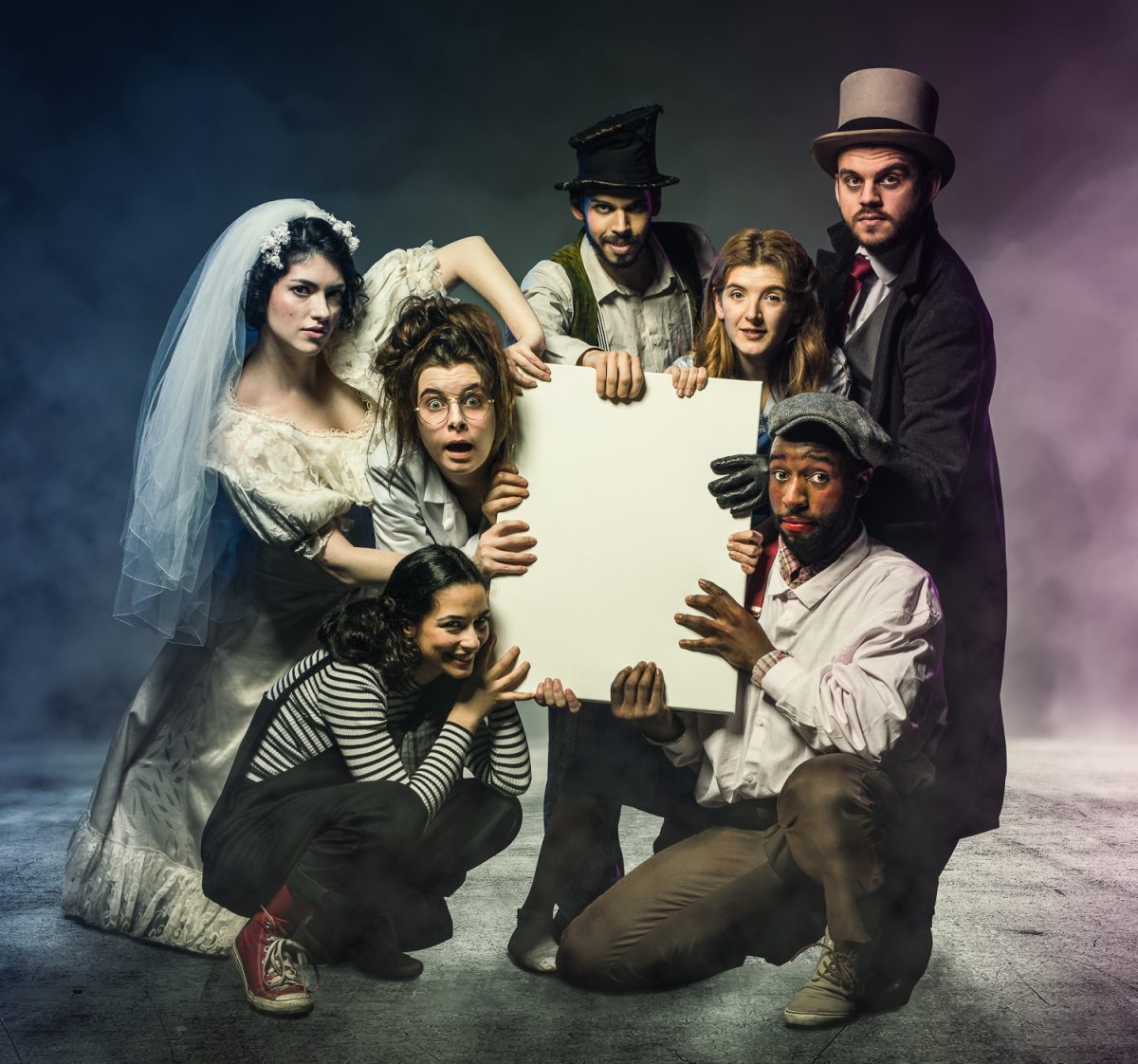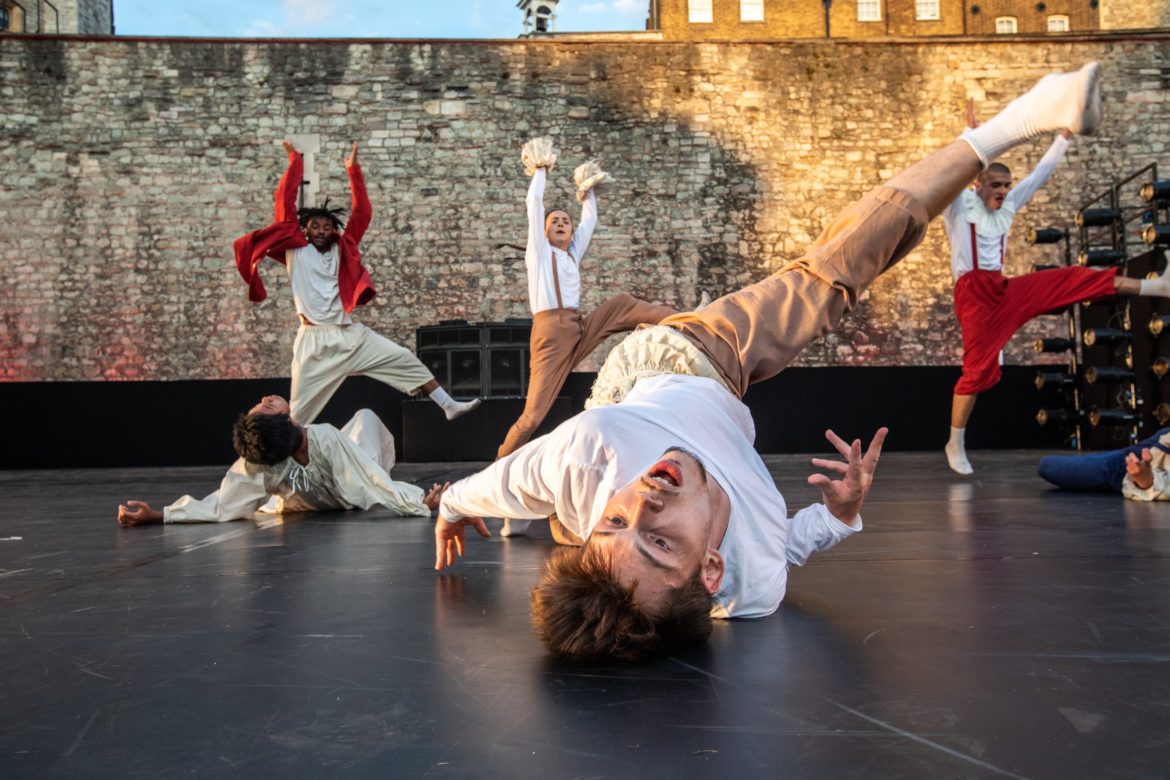Katie is 15, and has diabetes. Katie also has Pip. Pip is a dog. Pip can smell when Katie’s blood sugar is either too high or too low. Katie and Pip are in the show, and the show is about them. It’s also about type 1 diabetes (which Katie was diagnosed with age 2, and for which there is currently no cure), and provides the audience with an insight into how the illness affects people’s lives daily.
There are also two other performers called Rob and Charlotte, who collectively are Tin Can People, the makers of this, their first show. (Rob is Katie’s older brother.)
Delivered with a deadpan style and a stripped-down aesthetic, Katie and Pip is minimal throughout, and seems to use this low-key minimal style to reflect Katie’s outlook on life. There are brief intervals in the show where Katie checks her blood sugar levels, and Rob and Charlotte eat some Kit Kats. More visually impactful sections are carried out in a similarly matter-of-fact way, such as a bucket of tennis balls being launched across the space, sending Pip flying after them in ecstasy, and a sudden lighting change as all light leaves the room apart from two emergency flashing beacons. There’s no agony or angst brought into the space, they just crack on with what needs to be done, in the here and now. ‘I’m happy performing in Rob and Charlotte’s show’ Katie reads from a script..
It’s touching to have non-performers onstage letting the audience into their lives (particularly when one is a border collie), but the integration of the heartfelt true-life stories and the theatrical presentation of those stories needs more work.
As Pip bounces around the room, her excitement for her squeaky dog toy is palpable, but the consideration of the dog’s role seems to stop at her inclusion as a visual referencing point, and the three humans’ interactions with her often feel secondary.
Other aspects of show are puzzling. The humans put on dog masks and stand in stillness at the back of the space before carrying out training routines previously performed by Pip the dog. It’s not really clear why this and many other things are happening, but it’s as if Crofts have gone a bit mad and are covertly invading the fringe theatre scene.
It’s likely that this piece needs to be watched with a softer, more patient type of engagement…





